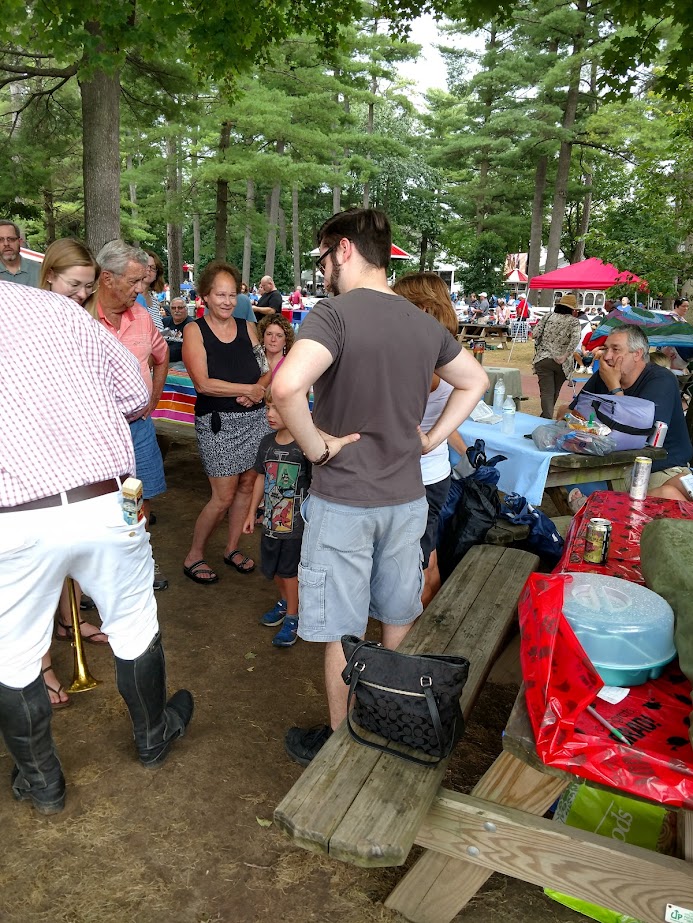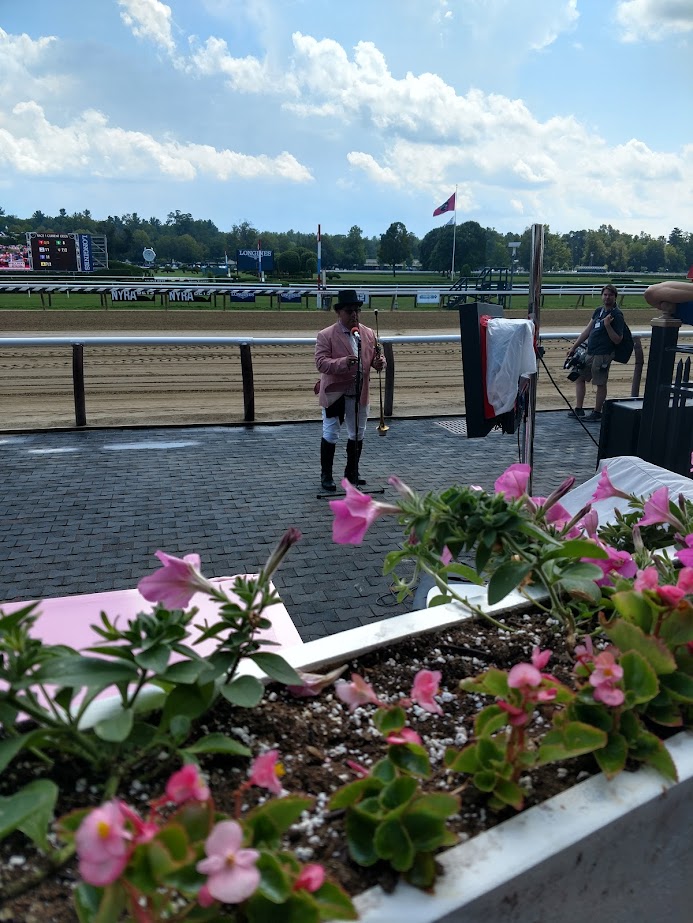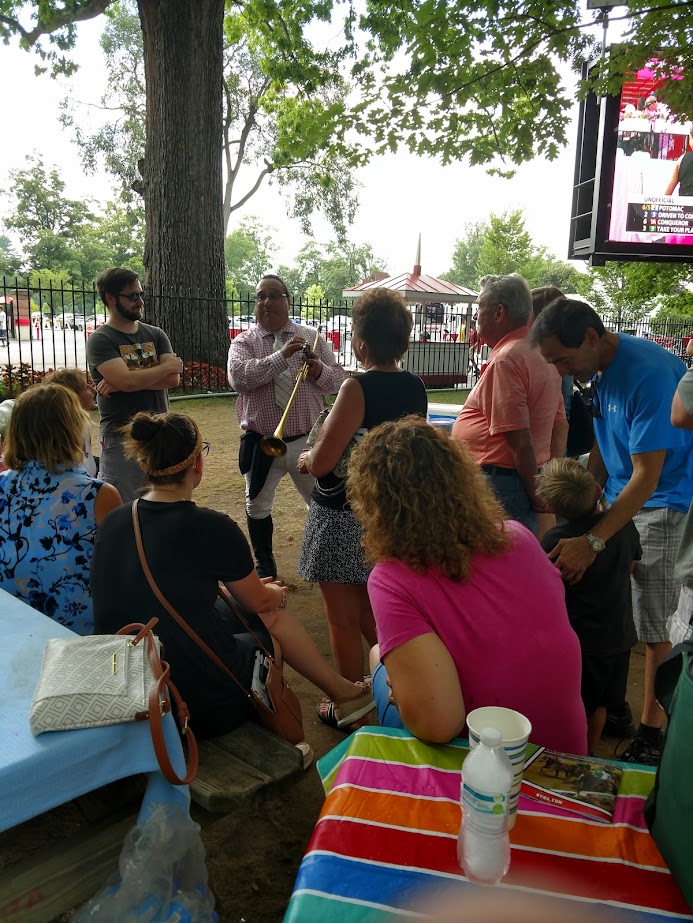I was saddened to learn of Neal’s passing through a mutual friend within a day of Tom Morley posting the news on his Twitter account. The cause of death was not stated, and yet I had a sense that my friend had made a most difficult decision after having fought valiantly against overwhelming pain for which he had exhausted all remedies. For a man like Neal, who was always considering the odds, he must have decided they were overwhelming.
My thoughts immediately turned to his wife, Debbie, and his two children, Michael and Courtney. Anyone who took the time to read his posts at Getting Out of the Gate or Daring Ways, knows that Debbie wasn’t a track widow and the kids were not orphaned by a dad so obsessed with the track that he ignored his fatherly duties. Instead, you quickly realized that they were his partners and supporters as he tried to educate and improve the lives of those around him, whether it was at the track or his self-help website. Debbie has confirmed to me that in voluntarily ending his life, Neal was acting in a way to not only spare him the enduring pain, but also to relieve his family from suffering, as his health continued to deteriorate and the pain grew too great to bear. So the fact that I had not heard from him for several months, especially during the Triple Crown Series, caused me serious concern and ended in an outcome that I feared, and yet realized brought him relief.
Can I say that I was a long time or close friend of Neal? I will not be so bold. I’ll let others judge the depth of our relationship based on how we met and the resulting email, text exchanges and Saratoga meetings through the years.
About seven years ago as I was scrolling through links on the HorseRacesNow app, created by Kenny McPeek and his wife, I saw a link to some “free” Kentucky Derby analysis at a website “Gettingoutofthegate.com”. As a fan of all aspects of the racing game, I was intrigued by the information on Neal’s website. I read his introduction in which he promised that the purpose behind it was to create new fans and enthusiasts by providing handicapping information and interesting stories from a fan’s point of view. His openness in sharing his racing experiences was unlike anything else I had read on the net or in print about the game. There was so much joy in every post. Needless to say, I was hooked. I found myself clicking on story link after story link, especially those in which he interviewed Maggie Wolfendale, Tom Morley and other racing insiders.
One day I saw a post in which Neal was offering free handicapping sessions at a local Albany, New York library in advance of the Derby – for free! “What kind of generous man was this?”, I thought. Nobody in the racing game provides the information that he was providing free of cost to the consumer. I was so moved by his efforts, I felt compelled to reach out to him. In a world of easy on line posting, sending an email would not have had the impact that I desired. I found his mailing address and sent him a good old-fashioned hand written letter. It ended up as 3 pages of my indecipherable scrawl, of which I failed to keep a copy. I can recollect telling him how much I valued his analysis, which was based on thoughtful research and the personal stories of his trips to Kentucky Downs and the backside at Saratoga. I indicated a desire to commence a correspondence if he was so inclined. After a few days, to my delight, Neal replied and our friendship began. At first, I simply provided some feedback and support of each new posting on his website. As the Saratoga season approached, and my wife and I planned to return for a week of attending the races and sight-seeing, Neal extended an offer to join the Benoit clan and friends at their traditional picnic table gathering by the paddock. We accepted and had a fun-filled day analyzing the horses, comparing notes and making wagers. You couldn’t find a more welcoming crowd on the grounds of the entire backyard. It was apparent that Neal enjoyed the good-humored handicapping debates with family and friends. I observed that Neal’s gentle ways prompted everyone around him to be more genteel in their conduct. I think to have argued too aggressively or to be too critical in ones’ appraisal of another’s handicapping was simply bad form and not to be proffered in Neal’s company. I don’t mean to say that Neal didn’t make bold predictions or take firm positions, he simply offered them in a way that was non-confrontational and everyone else followed suit.
While an invitation to the Benoit gathering revealed Neal’s generosity, he expanded it, by offering to take Nancy and I on a morning excursion to Tom Morley’s stable while he conducted an interview. To someone who spent mornings at the Oklahoma rail and later the Whitney Viewing Stand, such an offer was an unexpected gift. Spending a morning with Neal as he spoke with Tom, discussing the various horses in his stable, their prospects for victory and the burgeoning growth of Maggie’s career as an analyst with NYRA was a day on the backside that we’ll never forget and truly treasure.
Neal continued to write and develop new articles focused on handicapping angles for the Saratoga meet and the major events such as the Breeders’ Cup and Triple Crown Series, which helped all who read his posts. Sadly, he soon reached out to me to tell me that he was experiencing some health issues and he was limited in his ability to post articles on his website with his previous frequency. Soon the pain and his efforts to beat it, caused him to be concerned that the website might become irrelevant without fresh postings. It was then that he asked if Nancy could post some articles based on our travels to Saratoga. She initially questioned whether or not she could produce anything rivaling his work, but he assured me that she could do the job and it would be of great assistance to him. We agreed, honored that he thought enough of her to ask. So began an annual submission, coinciding with the Saratoga meet, offering restaurant and lodging reviews and reflections on things to do beyond attending the races. All the while we hoped that her reviews would become unnecessary and Neal would resume traveling with Debbie and find the strength to begin making regular postings. Unfortunately, that wish never came true.
Neal’s battle to use every available resource – especially his mind – to combat his pain, lead him to create a new website, “Daring Ways”, in which he sought to offer motivation to others to find ways to overcome their own disabilities. As with his racing website, Neal was always looking to educate others, through his own hard work and research. I found many of his articles inspiring and with each post hoped that Neal was deriving new found strength to overcome his own disabling illness.
Now that Neal has passed, I reflect upon how he might like me to honor him. I cannot offer anecdotes from childhood, or his professional life or even the types of stories a neighbor may share. But hopefully Neal would appreciate that I have delved into my library of racing literature and offer a few quotations that encapsulate his love of racing and provided the bonds of our friendship.
Neal loved his family and the horse in that order and so I think of James Whitcomb Riley.
“ ‘Each hoss has his appointed place, –
The heavy hoss should plow the soil; –
The blooded racer, he must race,
And win big wages fer his toil.
‘I never bet – ner never wrought
Upon my feller man to bet –
And yit, at times. I’ve often thought
Of my convictions with regret.
‘I bless the hoss from hoof to head –
From head to hoof, and tale to mane! –
I bless the hoss, as I have said,
From head to hoof, and back again!
‘ I love my God the first of all,
Then Him that perished on the cross,
And next, my wife, – and then I fall
Down on my knees and love the hoss.’
The Hoss, James Whitcomb Riley (1849-1916)
I considered Neal a “Racetracker” as defined by John Perrotta in his book of the same title. “Racetrackers are the keepers of the thoroughbred flame. They live for crisp mornings and steaming coffee at the rail. Their soundtrack is thunder rolling in the dirt under charging hooves and rabid fans with high stakes riding on every jockey’s whip. Their passion is the pursuit of champions.”
Neal like many of us, came to appreciate the people of racing without pre-conceived notions. He saw racetrackers as generally good people, not the scallywags depicted in literature and film. Perrotta quoted Bill Veek, who observed in Thirty Tons A Day that “The first question I was always asked – invariably, anywhere – was how I found horseracing compared to baseball. My answer – invariably, anywhere – was that, fans excluded, you met a nicer brand of human being in racing.” Neal certainly was a nicer brand of human being.
Neal found the backside especially intriguing much like Bill Barich in Laughing in the Hills. “I came to think of trainers as Renaissance princes who ruled the backstretch. Walking the shedrows I saw that each barn resembled a principality, embodying a unique blend of laws and mores, an individuated style.” I’ll always remember Neal’s joy walking the shed rows behind the Oklahoma Training Track.
Neal wanted us all to learn handicapping principles and then make our choices, satisfied that the lessons we learned from him would lead to a winning score. In Bill Barich’s follow up to Laughing in the Hills, A Fine Place to Daydream he wrote,
“Always stick with your first choice,” Rothwell cautioned me, with an oracular firmness that made me recall Allen Ginsburg’s motto about writing and creativity, “First thought, best thought.” In possession of such wisdom, I put fifty to win on Rule Supreme with Paddy Sharkey, violating a motto of my own that goes, “Never bet with a bookie whose name has a negative ring.”
There’s a wonderful relief in placing a bet. Like boarding an airplane or accepting a blind date, you’re in the hands of fate”.
And finally, some thoughts on Saratoga.
Sam Toperoff authored Crazy Over Horses, an apt title of a book to provide some perspective on Neal’s favorite track:
. . . yet Saratoga in 1966 remained an estimable place in August. It is still deciduous; when it blooms in August, there is still the same sort of pure excitement that has always been generated by racing. The repairs and additions to the grandstand, the fresh paint, the new escalators, the greatly emphasized publicity of the meeting back in New York City, none of these destroyed the essence of the finest racing in the United States. No, the track and the town were not quite what they had been, but the essence has remained pure.
. . . this track, this town, is the navel of thoroughbred racing in the United States. Close to it again I felt more the man of quality.
The track was jammed, as it is each Saturday in August. Lots of people up from the city. Lots of rustics too. There were no seats in the grandstand, no seats in the clubhouse, no reserved seats anywhere. No seats. People milled about. Many sat in lightweight lawn chairs that they’d brought with them. . . Handicappers, bettors, and aesthetes ring the horses . . . A call to the paddock, and everyone — spectator, trainer, owner, handler, jockey and horse —moves leisurely toward the walking ring. In the ring the horses are paraded, mounted, paraded again, and led by the red-coated outriders along an old path around the clubhouse and onto the track. . . . At Saratoga, there is much more than mere running. There’s racing, with an ease and tradition worthy of the horse and his parents.
Neal knew of the magic of Saratoga and was always happy to share his love of it with all who knew him.
Finally, Neal, dear friend, in the immortal words of Harvey Pack, “May the Horse Be with You!”










